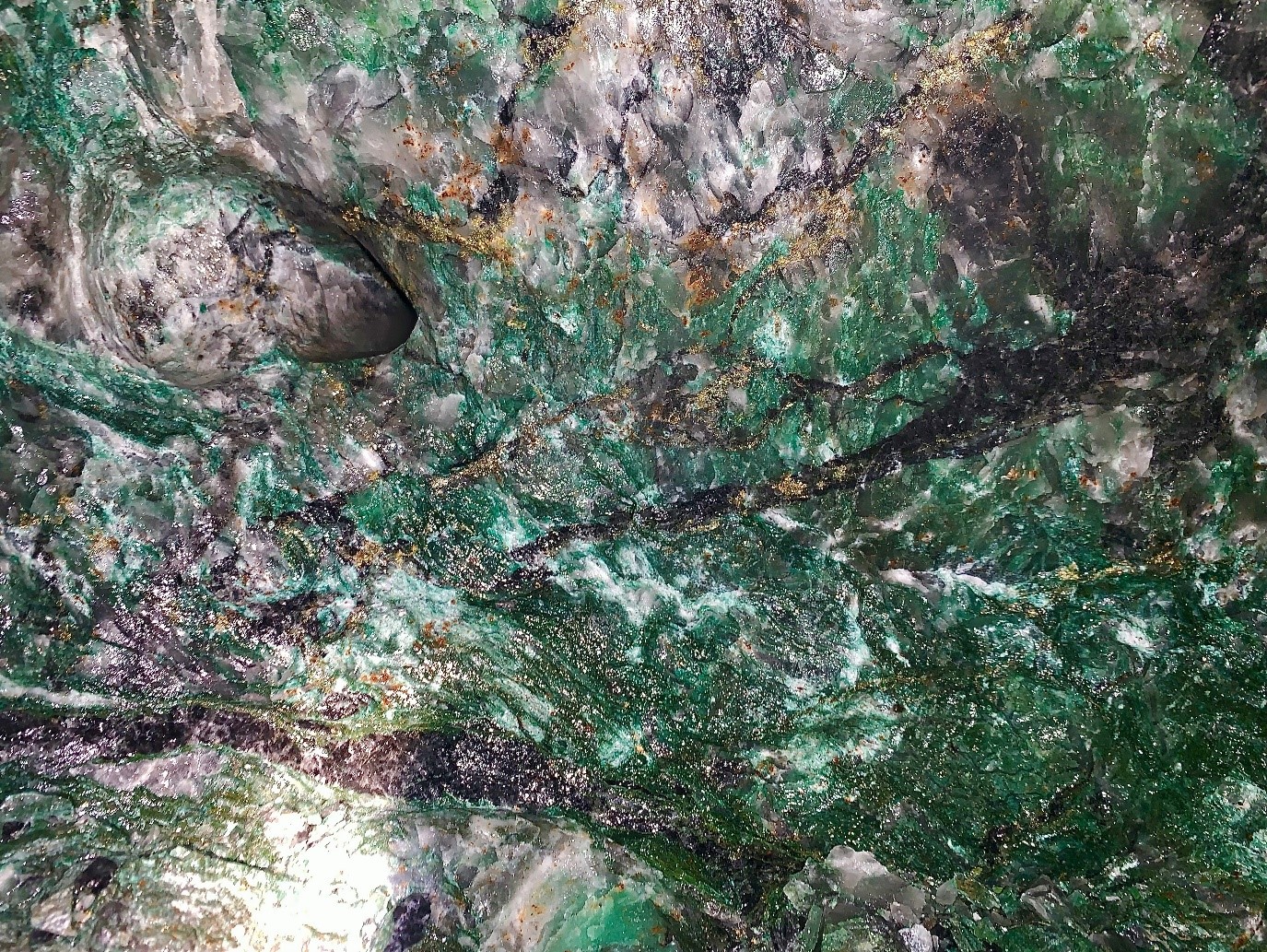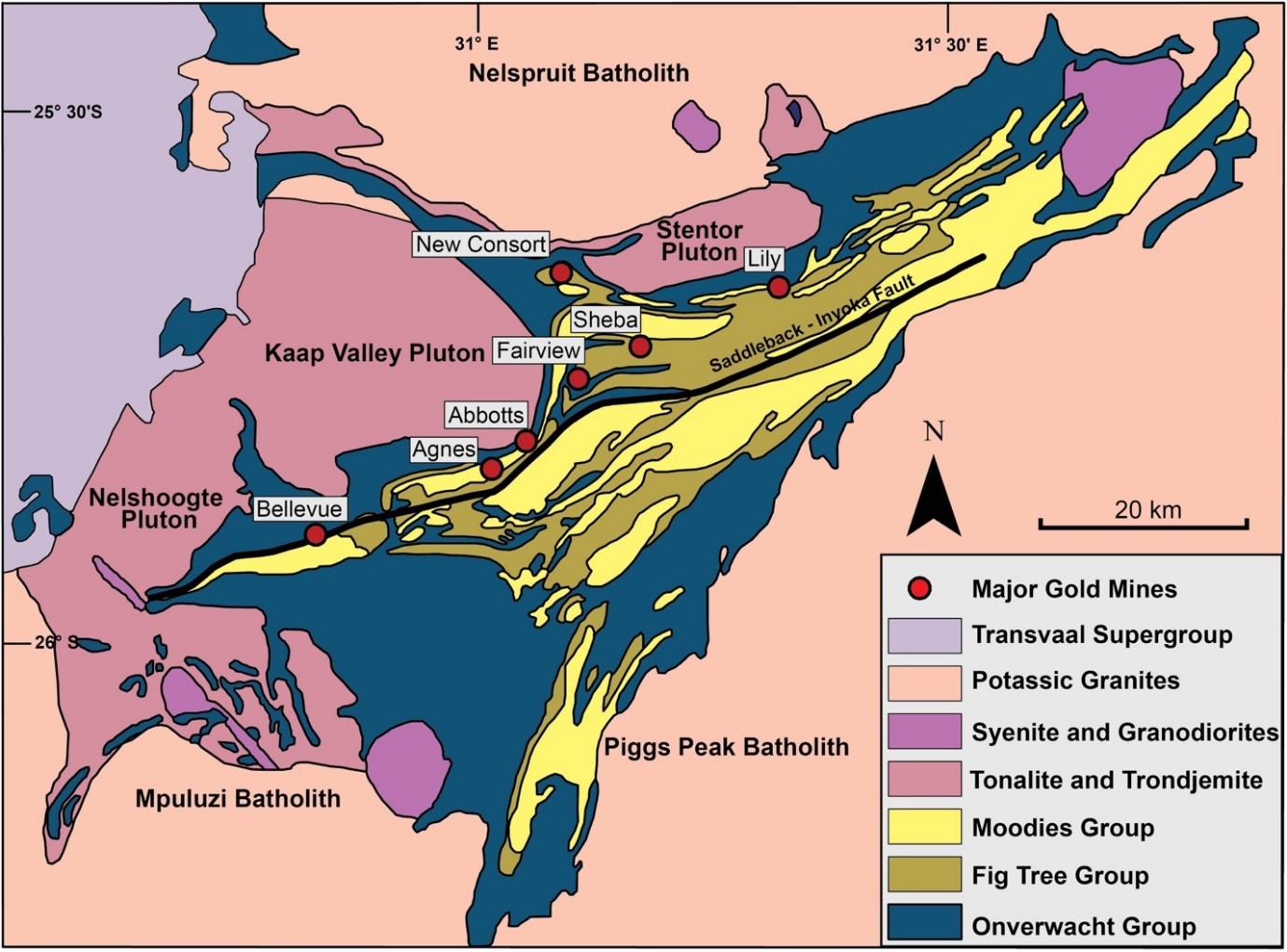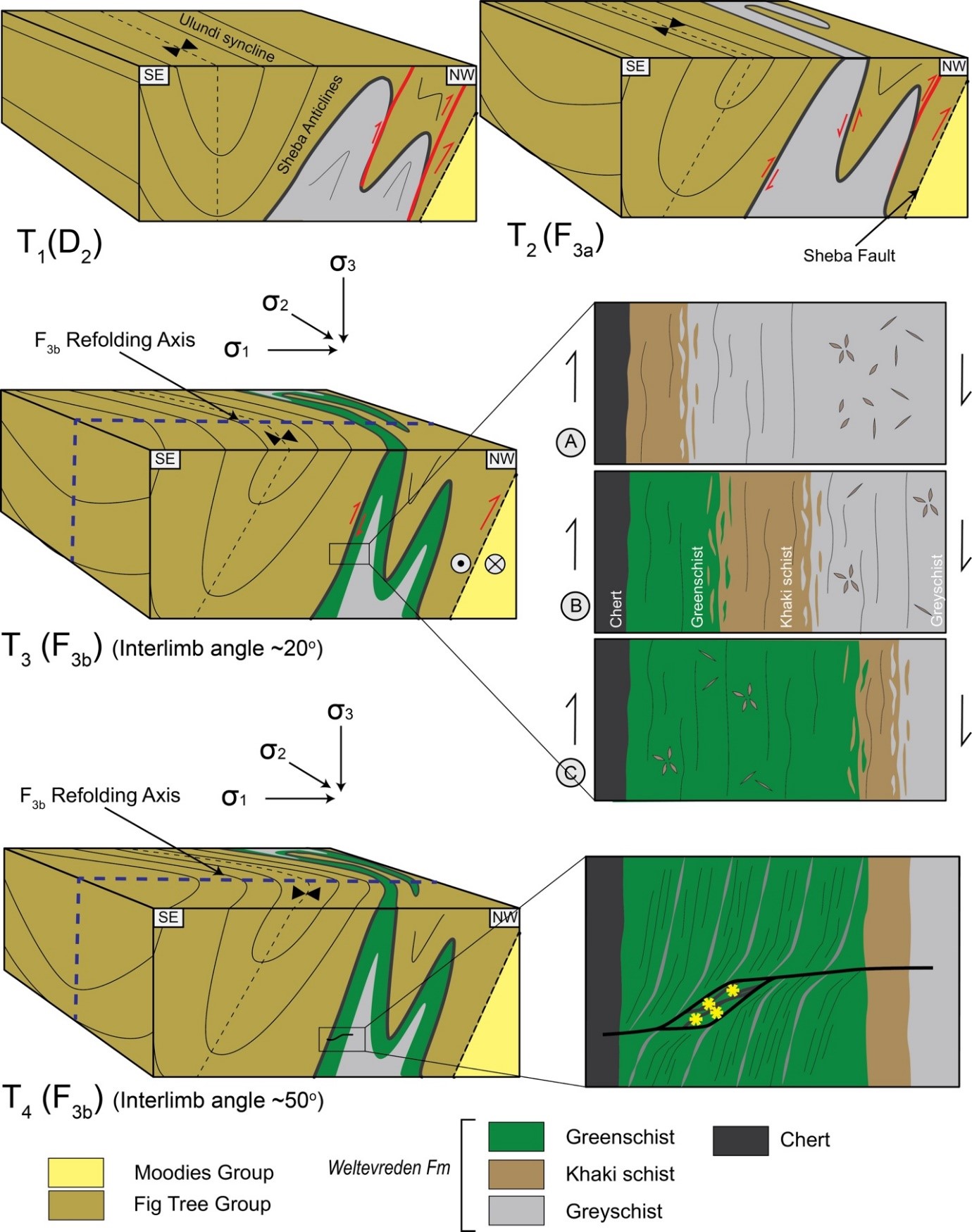The Barberton Greenstone Belt located in the eastern portion of the Kaapvaal Craton in South Africa, is probably one of the most intensively researched Archaean terrains in the world. The belt has also produced some >350 ton of gold in its over 130 years of near-continuous mining since the mid-1880s, mainly from a cluster of mines in the northern parts of the belt (e.g., Pearton and Viljoen, 2017). Past and present mining has concentrated on a large number of distinct quartz-carbonate-sulphide reefs or fractures, with different geometries alternating from linear shoots to planar orebodies, have numerous orientations, and with various structural controls, along brittle-ductile faults, breccias, quartz-vein stockworks or finely disseminated. The auriferous fractures also have variably developed lithological controls either along ultramafic units or in the well-bedded metasediments (e.g., Schouwstra and de Villiers, 1988; Otto et al., 2007; Gloyn-Jones and Kisters, 2018, 2019; Pintos Cerda et al., 2020). Research focusses on determining the structural controls of these auriferous fractures and consequently placing the findings within the broader structural history of Barberton Greenstone Belt.



Figure 1: Free gold hosted within quartz; sample from Thomas Fracture at Sheba Mine.
Figure 2: Free gold within black quartz-carbonate veins hosted in the green schist of the Onverwacht Group of the Zwartkoppie Anticline, Sheba Mine.
Figure 3: Regional geological map of the Barberton Greenstone Belt and major gold mines (Modified after De Ronde & De Wit, 1994 and Agangi et al., 2014).


Figure 4: MSc students, Lucas Pintos Cerda and Caitlin Jones during fieldwork at Sheba Mine, Barberton Greenstone Belt.
Figure 5: Schematic illustration showing the relationships between regional folding, alteration and low angle thrusting during folding and refolding of the Eureka and Ulundi synclines.

